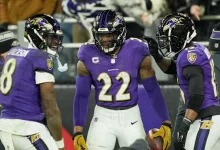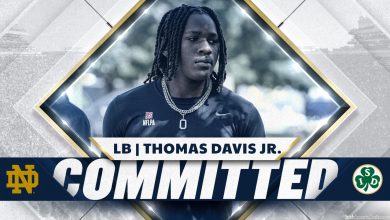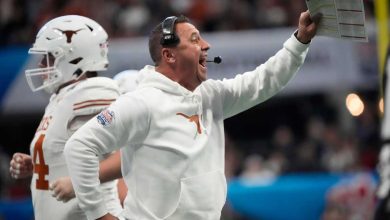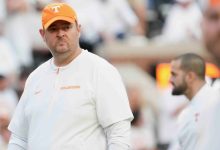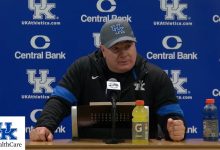Duke’s Cooper Flagg’s NBA potential has been questioned ahead of the 2025 draft, with doubts surrounding his ceiling and ability to adapt at the professional level.

In the landscape of college basketball, few prospects generate as much anticipation and debate as Cooper Flagg, the young phenom from Duke University. With a reputation built on exceptional athleticism, versatility, and a high basketball IQ, Flagg has captivated scouts, analysts, and fans alike. As he approaches the 2025 NBA Draft, however, questions about his ceiling and adaptability at the professional level have emerged, sparking intense discussion about whether this promising talent can fulfill the lofty expectations set for him.
This comprehensive analysis aims to dissect Flagg’s strengths, weaknesses, and the various factors that influence his NBA projection. We will explore his background, skill set, potential fit within NBA systems, and the reasons behind the skepticism surrounding his ceiling. Additionally, we’ll consider the broader context of NBA drafting and how prospects like Flagg navigate the transition from college to professional basketball.
Background and Rise to Prominence
Cooper Flagg hails from a basketball-rich environment, known for his exceptional athletic ability and versatile skill set. Standing around 6’8” with a wingspan that rivals top prospects, Flagg quickly made a name for himself in high school, earning national recognition as one of the top players in his class. His decision to attend Duke, a program renowned for developing NBA-ready talent, further heightened expectations that he would be a top-tier draft pick in 2025.
Flagg’s game is characterized by his high motor, defensive versatility, and the ability to impact play on both ends of the floor. His combination of length, agility, and intelligence makes him an intriguing prospect capable of guarding multiple positions and contributing as a playmaker. His offensive game, while still developing, shows promise as a shooter, ball-handler, and finisher around the rim.
Strengths of Cooper Flagg
1. Physical Attributes and Athleticism
One of Flagg’s most notable assets is his physical profile. His height, wingspan, and athleticism give him a significant advantage in both offense and defense. His ability to switch across multiple defensive positions and contest shots effectively makes him a valuable asset in modern NBA schemes that emphasize switchability.
2. Defensive Versatility
Flagg’s defensive prowess is often highlighted as his most NBA-ready trait. His length and agility allow him to guard a variety of positions, from point guards to power forwards. His instincts and timing enable him to block shots and generate turnovers, which are crucial elements for contemporary NBA teams seeking elite perimeter defenders.
3. High Basketball IQ
Another key aspect of Flagg’s game is his basketball IQ. His understanding of positioning, court awareness, and decision-making on both ends make him a promising two-way player. This intelligence is vital for rookies transitioning into the NBA, where the speed and complexity of the game increase exponentially.
4. Potential as a Playmaker
While still raw offensively, Flagg’s ability to handle the ball and make plays suggests he could develop into a secondary playmaker at the NBA level. His passing ability and court vision, combined with his athletic tools, offer a foundation on which to build a more complete offensive game.
The Skepticism: Why Questions About His Ceiling Persist
Despite the promising attributes, significant doubts about Flagg’s NBA ceiling have surfaced. Critics and scouts voice concerns rooted in various aspects of his game, development trajectory, and the transition from college to the pros.
1. Limited Offensive Skill Set
One of the primary criticisms is Flagg’s current offensive limitations. While he shows flashes of shooting ability and ball-handling, his offensive game is still in its infancy. Critics worry that he may struggle to create his own shot consistently at the NBA level, where defenses are more disciplined and physicality is heightened.
The concern is that Flagg relies heavily on athleticism and instinct rather than refined skill, which could hinder his scoring efficiency and versatility. If he cannot develop a reliable perimeter shot and improve his ball-handling, his offensive ceiling may be capped, relegating him to a primarily defensive role.
2. Questionable Scoring Consistency
Flagg’s scoring numbers in college or high school may not translate directly to NBA success. Scouts point out that his offensive production has been inconsistent, often dependent on catching lobs or exploiting mismatches rather than creating opportunities independently. This inconsistency raises doubts about whether he can become a reliable scorer, especially against the NBA’s elite defenders.
3. Physical and Skill Development Concerns
Transitioning from college or high school to the NBA involves significant physical and skill development. Critics argue that Flagg may need more time to bulk up and refine his offensive skills. There’s concern that his current frame and skill set might not be sufficient to handle the physicality and speed of NBA play immediately.
Furthermore, some analysts question whether Flagg’s defensive prowess will be enough to overcome limitations on offense. In the NBA, teams often prioritize two-way players who can contribute equally on both ends, and doubts persist about whether Flagg can develop into such a player.
4. Competition and Level of Play
While Flagg has shown dominance at the high school and college levels, the jump to the NBA is a different challenge entirely. Critics emphasize that many prospects with impressive college or high school resumes have struggled to make a smooth transition, citing the higher skill level, basketball IQ, and physicality of professional players.
The concern is that Flagg’s current skill set and physical attributes, while impressive, may not be enough to overcome the gap in talent and experience. Some suggest that he may need additional years of development, which could impact his draft stock and long-term potential.
5. Mental and Tactical Maturity
Another area of scrutiny involves Flagg’s mental maturity and tactical understanding. The NBA requires players to adapt quickly to complex schemes, play under pressure, and exhibit resilience. Critics question whether Flagg’s maturity and experience are sufficient to handle the mental demands of the league, which could influence his ceiling.
Factors That Could Influence Flagg’s NBA Future
Despite skepticism, several factors could enhance Flagg’s prospects and mitigate concerns about his ceiling.
1. Developmental Environment
Being drafted into a team that prioritizes player development can significantly impact Flagg’s trajectory. A coaching staff committed to refining his offensive skills, improving his physicality, and integrating him into a team system could unlock his potential.
2. Work Ethic and Learning Curve
Flagg’s willingness to work on his weaknesses, such as shooting and ball-handling, will be crucial. His ability to learn and adapt quickly could accelerate his development, allowing him to contribute meaningfully at the NBA level sooner.
3. Role and Fit
The NBA often rewards players who excel in specific roles. If Flagg can carve out a niche as a defensive specialist, energy player, or versatile defender, his value increases. A team that emphasizes defense and positional flexibility could maximize his strengths and help him realize a higher ceiling.
4. Injury and Physical Growth
Physical development is an ongoing process for young prospects. If Flagg continues to build strength and improve his athleticism, he could overcome some of the physical limitations critics cite. Additionally, avoiding injuries and maintaining health will be vital.
5. Mentorship and Support
Having experienced mentors and a supportive environment can help Flagg navigate the challenges of professional basketball. Learning from seasoned veterans and coaching staff can accelerate his growth and expand his skill set.
The Broader Context: Comparing Flagg to NBA Peers
To better understand Flagg’s potential ceiling, it’s helpful to compare him to other players with similar profiles and trajectories. Many current NBA stars started with questions about their offensive skills but developed over time.
For instance, players like Draymond Green and Giannis Antetokounmpo faced skepticism early in their careers but became integral parts of championship-winning teams through continuous development and adaptability. Their stories suggest that initial doubts do not preclude future success.
Conversely, some prospects with similar physical tools and college performances have failed to meet expectations, illustrating the unpredictability of NBA development. The league’s competitive nature and the importance of a well-rounded skill set mean that Flagg’s future hinges on multiple factors beyond raw talent.
A High Ceiling with Uncertain Outcomes
As Cooper Flagg approaches the 2025 NBA Draft, the questions surrounding his ceiling reflect a common narrative in evaluating young prospects: immense potential tempered by legitimate concerns about skill development, physicality, and adaptability.
Flagg’s strengths—elite athleticism, defensive versatility, high basketball IQ—provide a solid foundation for an NBA career. However, the gaps in his offensive game, questions about maturity, and the steep learning curve of professional basketball fuel skepticism about whether he can reach the highest echelons of the league.
Ultimately, Flagg’s NBA future will depend on his ability to address these concerns through diligent work, strategic development, and the right environment. His story is still being written, and while doubts persist, so too does the possibility of a transformative career. As with many prospects, his true ceiling will be revealed in the coming years, making him one of the most intriguing players to watch heading into the 2025 draft.


